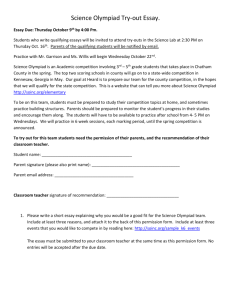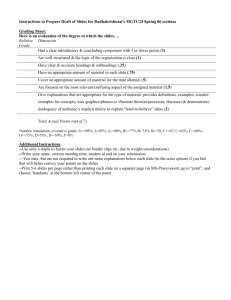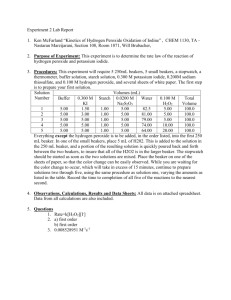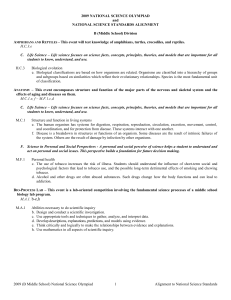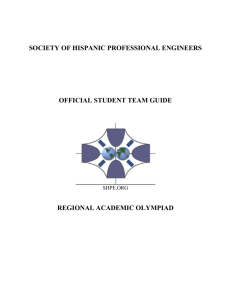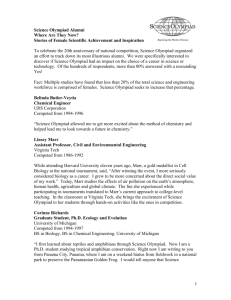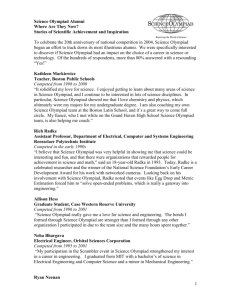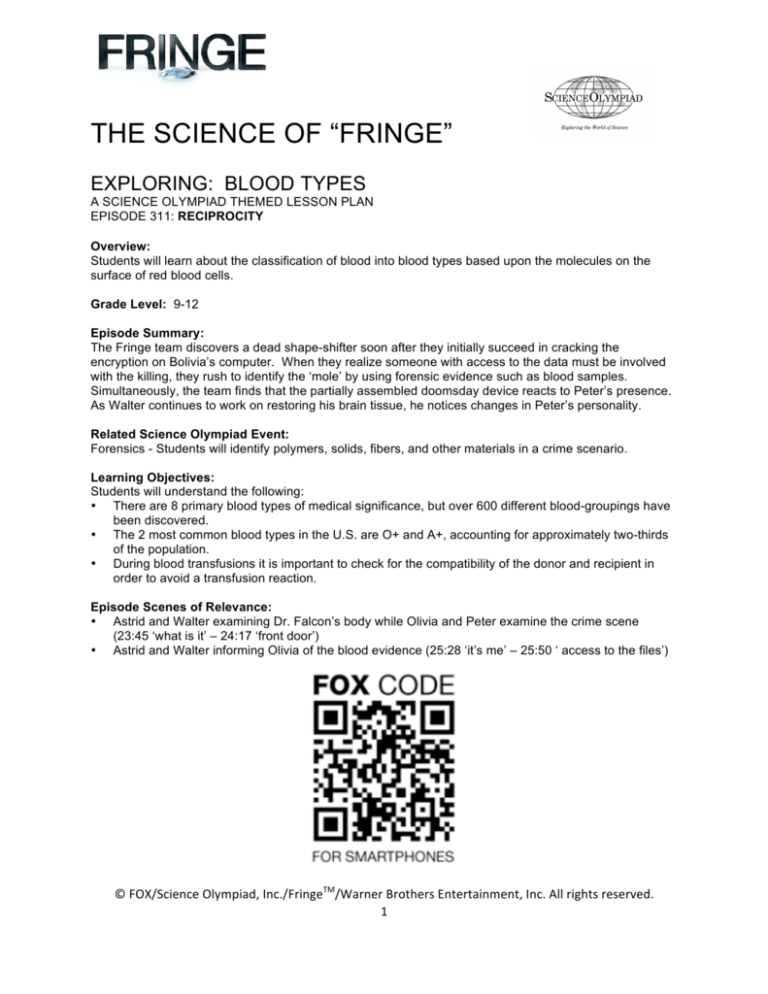
THE SCIENCE OF “FRINGE”
EXPLORING: BLOOD TYPES
A SCIENCE OLYMPIAD THEMED LESSON PLAN
EPISODE 311: RECIPROCITY
Overview:
Students will learn about the classification of blood into blood types based upon the molecules on the
surface of red blood cells.
Grade Level: 9-12
Episode Summary:
The Fringe team discovers a dead shape-shifter soon after they initially succeed in cracking the
encryption on Bolivia’s computer. When they realize someone with access to the data must be involved
with the killing, they rush to identify the ‘mole’ by using forensic evidence such as blood samples.
Simultaneously, the team finds that the partially assembled doomsday device reacts to Peter’s presence.
As Walter continues to work on restoring his brain tissue, he notices changes in Peter’s personality.
Related Science Olympiad Event:
Forensics - Students will identify polymers, solids, fibers, and other materials in a crime scenario.
Learning Objectives:
Students will understand the following:
• There are 8 primary blood types of medical significance, but over 600 different blood-groupings have
been discovered.
• The 2 most common blood types in the U.S. are O+ and A+, accounting for approximately two-thirds
of the population.
• During blood transfusions it is important to check for the compatibility of the donor and recipient in
order to avoid a transfusion reaction.
Episode Scenes of Relevance:
• Astrid and Walter examining Dr. Falcon’s body while Olivia and Peter examine the crime scene
(23:45 ‘what is it’ – 24:17 ‘front door’)
• Astrid and Walter informing Olivia of the blood evidence (25:28 ‘it’s me’ – 25:50 ‘ access to the files’)
©
FOX/Science
Olympiad,
Inc./FringeTM/Warner
Brothers
Entertainment,
Inc.
All
rights
reserved.
1
Online Resources:
• Fringe “Reciprocity” full episode: http://www.fox.com/watch/fringe
• Science Olympiad Forensics event: http://soinc.org/forensics_c
• American Red Cross Blood Types: http://www.redcrossblood.org/learn-about-blood/blood-types
• Animated Blood Types: http://waynesword.palomar.edu/aniblood.htm
• Bloodbook: http://www.bloodbook.com/type-facts.html
Procedures:
1. Tell your students that they are going to learn about blood types.
2. Have your students research blood types in resources such as biology textbooks and websites and
discuss what they have learned.
3. Divide your class into groups. Have each group complete the following activity:
a. Materials: blue, yellow and green food coloring, 5 beakers, water, pipettes
b. Put an equal amount of water in 4 of the beakers. Add food coloring to 3 of the beakers (1
color per beaker, 5 drops / 100 ml)
c. These beakers represent the 4 ABO blood types as follows: Blue – A, Yellow – B, Green –
AB, Clear - O.
d. Add a quantity of “A” fluid to the empty beaker to represent a ‘patient’.
e. Using a pipette, transfer some ‘B’ fluid to the ‘patient’ and notice whether the color changes in
the patient. If it does, it represents an ‘unsafe transfusion’. Record the result.
f. Rinse out the patient beaker and repeat the process for all 16 possible combinations of
‘patient’ and ‘transfusion’ types.
g. Create a chart showing which combinations are ‘safe’ and which are ‘unsafe’.
4. Discuss with the class the results of the activity. Be sure to address:
a. What patterns do they see in the charts?
b. Is a certain type a ‘universal’ patient or donor?
c. How could they expand the activity to incorporate Rh blood type in addition to ABO types?
Additional Discussion Suggestions:
• Ask the students if they know their own blood type. Create a chart of the student’s blood types and
compare the relative percentages to that of the general population.
• Blood type is based upon specific genes passed from parents. What are some offspring blood types
that are not possible from some pairings of parents?
Extension to Other Subjects:
Social Sciences: Certain ethnic groups have other rare blood types. Research some of these rare blood
types and discuss why they may be more prevalent in the population they appear in.
History: Knowing a soldier’s blood type on the battlefield is important to ensure effective medical care in
case of injury. What are some methods by which militaries have recorded this information?
Psychology: Some people believe that blood type impacts personality. Research the origins of this belief
and any evidence that supports or refutes it.
©
FOX/Science
Olympiad,
Inc./FringeTM/Warner
Brothers
Entertainment,
Inc.
All
rights
reserved.
2
National Science Standards Alignment:
A. Science as Inquiry – Science as inquiry requires students to combine processes and scientific
knowledge with scientific reasoning and critical thinking to develop their understanding of science.
H.A.1 Abilities necessary to do scientific inquiry
c. Use technology and mathematics to improve investigations and communications.
d. Formulate and revise scientific explanations and models using logic and evidence.
f. Communicate and defend a scientific argument.
U. Unifying Concepts and Processes – Unifying concepts and processes help students think about and
integrate a range of basic ideas which builds an understanding of the natural world.
H.U.2 Evidence, models, and explanation
a. Evidence–Evidence consists of observations and data on which to base scientific explanations.
The goal is to help students use evidence to understand interactions and predict changes.
c. Explanations–Explanations provide interpretation, meaning, or sense to objects, organisms, or
events. Explanations incorporate existing scientific knowledge and new evidence from
observations, experiments, or models into internally consistent, logical statements, such as
hypotheses, laws, principles, and theories. The goal is to help students create explanations which
incorporate a scientific knowledge base, logic, and higher levels of analysis.
©
FOX/Science
Olympiad,
Inc./FringeTM/Warner
Brothers
Entertainment,
Inc.
All
rights
reserved.
3

